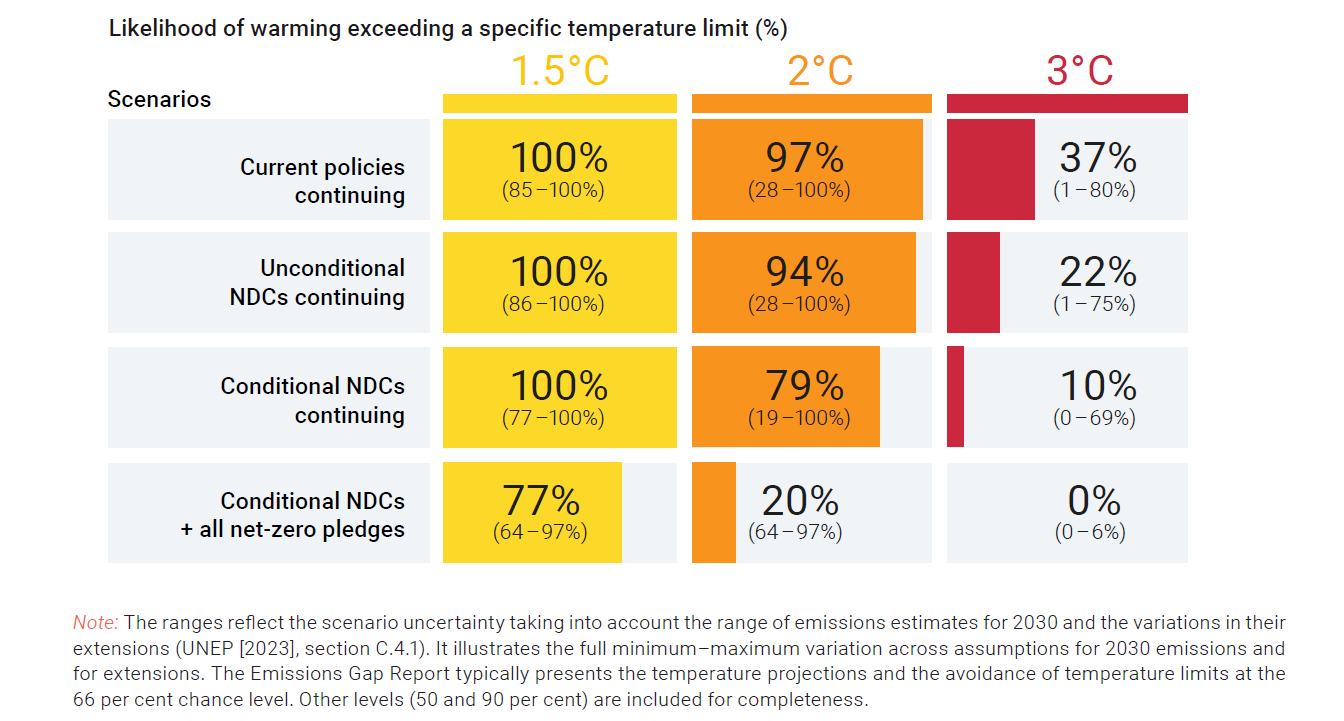3.1 Degrees
As the second week of COP29 continues, it’s worth considering that the Paris Agreement is a legally binding international treaty that was adopted in Paris, France during COP21 in late 2015 when 196 of the world’s nations agreed to a primary goal that seeks to limit global warming to “well below 2 degrees Celsius” above pre-industrial levels, while also setting what was called an ambitious goal to limit the actual increase to 1.5 degrees Celsius versus pre-industrial levels. It is these goals, especially the 1.5 degrees mark, that the nations of the world have since been focused on achieving so as to mitigate and avoid the most catastrophic and costly impacts of our climate crisis should temperatures rise above that mark by century end.
How are we doing since those goals were established?
Well, nine years after the Paris Agreement’s goals were published, society is currently on track to have temperatures increase between 2.6 to 3.1 degrees Celsius by the end of this century. Based on existing technologies, a rapid, seismic adjustment is needed by the nations of the world, especially the largest polluters such as China and the United States, if we are to have any chance of achieving the goals from Paris in 2015.
At COP29, which started last week in Baku, Azerbaijan, the world’s nations will review their progress and plans towards meeting the Paris Agreement goals and debate the updated Nationally Determined Contributions (NCDs) that I wrote about in one of my last posts, revised plans that are due to be published in early 2025. The NDCs seek to determine how the world’s nations, by country and collectively, are progressing (or regressing) towards the Paris Agreement goals and it is my view that the outcome from this year’s COP on this topic will be one of the most important issue delegates address in Baku.
Just in time for COP29, the United Nations Environment Programme has published its most recent Emissions Gap Report, its 15th in an ongoing series in which the world’s leading climate scientists review ongoing trends and possible solutions with the Paris Agreement’s goals in mind. Given our current trajectory versus mankind’s stated goals from 2015, this year’s report is fittingly entitled “No more hot air … please!” As the report aptly summarizes, when it comes to transitioning our society to renewable energy and reducing the world’s greenhouse gas pollution there is a “massive gap between rhetoric and reality.”
This year’s report includes the illustration above that depicts where the world’s temperature is headed under various scenarios beginning with what is expected to happen if current policies continue (there is, for example, an estimated 100% chance that we will exceed the 1.5-degree aspirational goal from the Paris Agreement, a 97% chance of reaching or surpassing 2 degrees, and a 37% chance of reaching/exceeding 3 degrees). This table, and the first line within it that depicts a continuation of our current worldwide approach, helps explain the report’s conclusion that there is a “massive gap between rhetoric and reality.” Without dramatically increasing our shift away from polluting products and processes to renewables, it’s clear that we will exceed our current temperature goals and in doing so place our society and planet in dire danger.
You can find the most recent Emissions Gap Report from the UN here.

